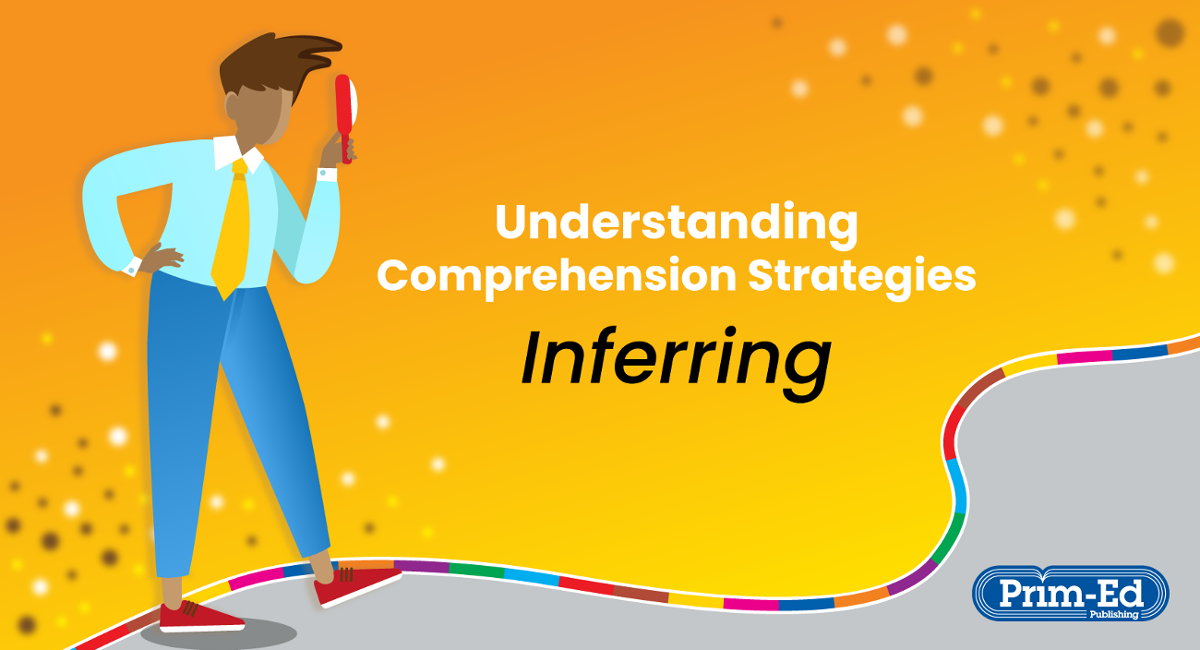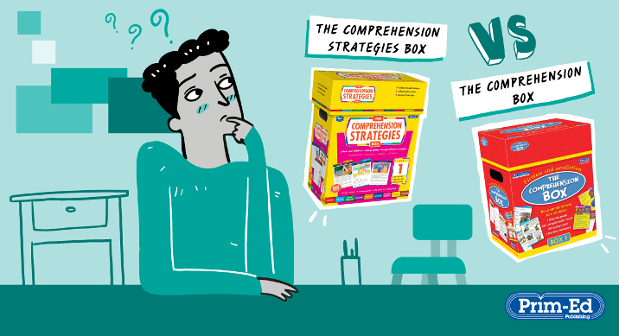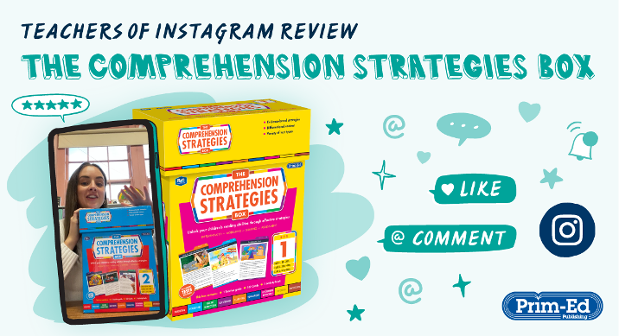- Wednesday 30 September 2020
The Inferring Reading Comprehension Strategy
Understanding what they read is one of the biggest difficulties a child will have while reading. It is therefore crucial that they are explicitly taught a range of strategies to encourage and master reading comprehension.
Inferring is one of many important reading strategies for children to learn and involves identifying hidden messages in a text. Readers do this by combining information from the text with his/her prior knowledge to create opinions and give a deeper meaning to the text. Inferences are not explicitly stated by the writer but are hinted at. Inferring is often referred to as ‘reading between the lines’.
Inferring involves piecing together clues from the text and own experiences to draw a conclusion. Readers must be able to justify their inferences using clues from the text.
When inferring, readers:
- Think of background knowledge that relates to the text.
- Look for clues the writer has given in the text.
- Create inferential questions that tie together background knowledge and clues in the text.
- Answer the inferential questions they created.
Inferential thinking is a complex skill which is quite difficult to master, however it will help children in other school subjects, particularly science, and also in general life.
Inferring in the Classroom
Inferring is not just a reading comprehension strategy but also an important life skill.
Games are a good way to introduce the strategy of inferring. Ask children to play detective by showing an item of clothing and ask them who might wear it; for example, a ballet shoe or tutu would be worn by a ballerina. Mystery boxes could also be used. Put objects into a box and ask children what the person the objects belong to might be doing; for example, a box containing a tennis ball, dog collar and water bowl would suggest a person is taking a dog for a walk.
Children should be given an illustration or text and ask literal questions about it, where the answers are obvious. The children should then be asked literal questions about the same or another illustration or text. Initially, these should be oral activities. Picture books are a really good start, as children only have the pictures to make inferences from. Photographs also work well. After children have looked at the same picture or photograph, ask them to tell the story behind it, using evidence from the image. Children can then compare and contrast their stories, and therefore inferences, for each image.
Once children are proficient at asking and answering literal questions, select a short text and include inferential questions, with hidden and not obvious answers. Children need to be able to support their answers by referring to text clues and their prior knowledge. Encourage children to ask their own literal and inferential questions as well.
Templates could be used to help children record their inferences in an organised way. Children should record clues they find in the text, write what they already know, and then read between the lines and record what they can infer (or deduce) from this.
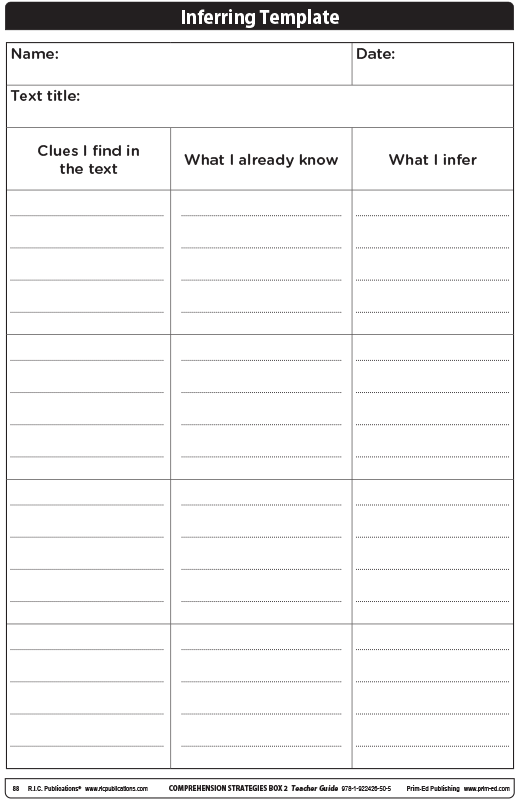
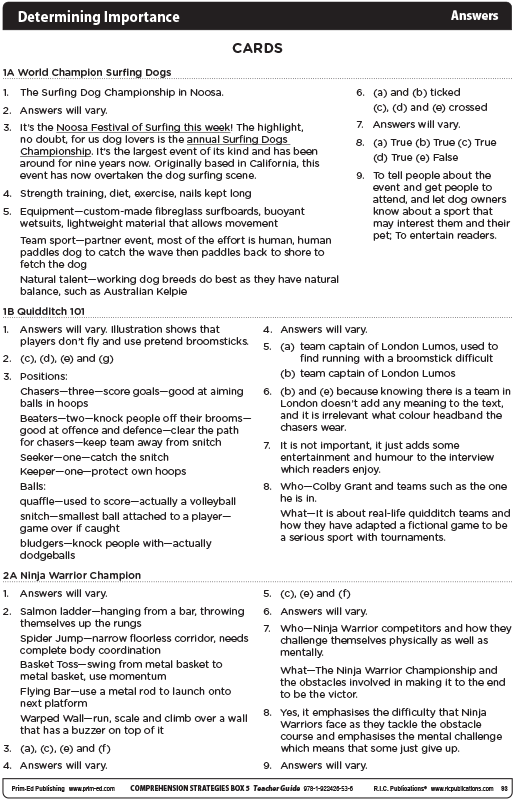
Templates from Teacher Guides in The Comprehension Strategies Box series.
Inferring in The Comprehension Strategies Box
Inferring is the eighth of nine reading comprehension strategies covered in the The Comprehension Strategies Box series. This boxed series, written at six levels for the six main primary school years, consists of full-colour, differentiated, fiction and non-fiction reading cards which cover nine different comprehension strategies, a comprehensive teacher guide that explains the strategies and how to use the series, and an activity book with photocopiable activities to enable children to focus on and practise each strategy.
Each reading strategy is introduced in the teacher guide, with a page of background information for teachers to familiarise themselves with.
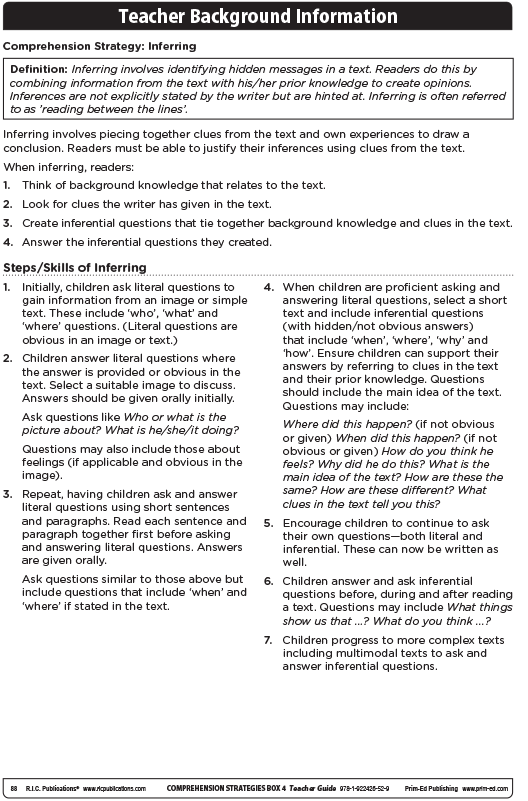
Sample page from Teacher Guide 4 in The Comprehension Strategies Box series.
The teacher should then use the modelling text provided to introduce and demonstrate the inferring comprehension strategy to their class. The illustrated text should be displayed onto an interactive whiteboard, to enable the teacher to conceal and reveal parts of the text to the children, and highlight text and add annotations as appropriate. The steps the teacher should go through to model and teach the strategy are clearly laid out in the teacher notes. The modelling is oral and starts with discussion on the title and illustration to ensure the children understand the vocabulary in the title. To start with, the whole text is read and literal questions are asked and answered to ensure comprehension. Then, the text is read through, paragraph by paragraph. After each paragraph, inferential questions should be asked and children should use evidence from the text to back up their answers.
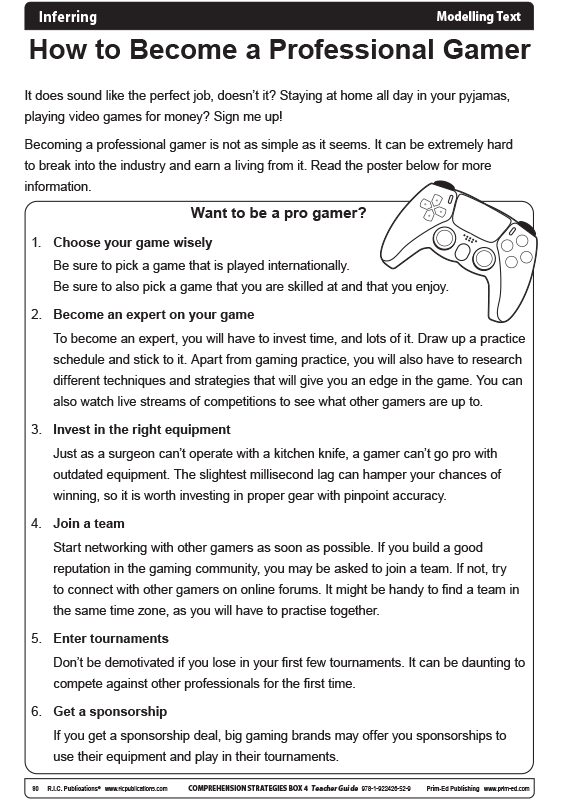
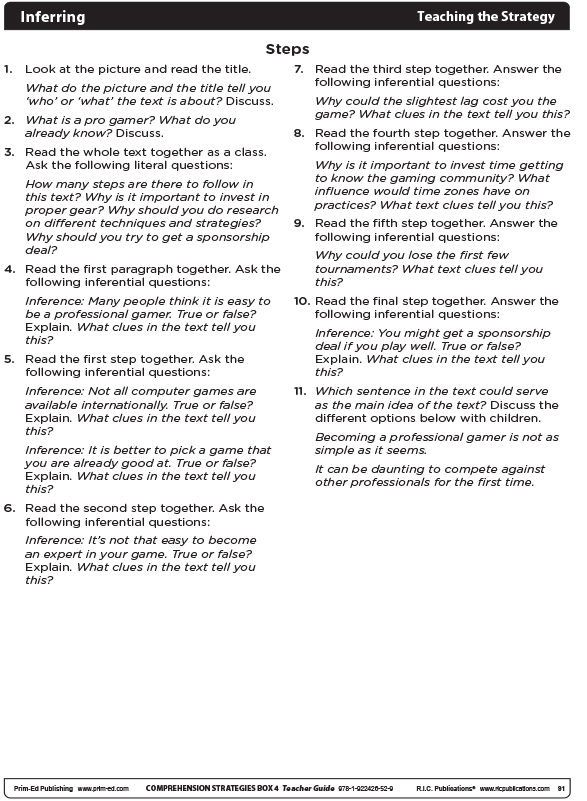
Sample pages from Teacher Guide 4 in The Comprehension Strategies Box series.
In a similar way to how the modelling text was presented and used with the class, the teacher should then present the sharing text. This can either be another oral activity or children may work with each other to answer the questions and practise the strategy together.
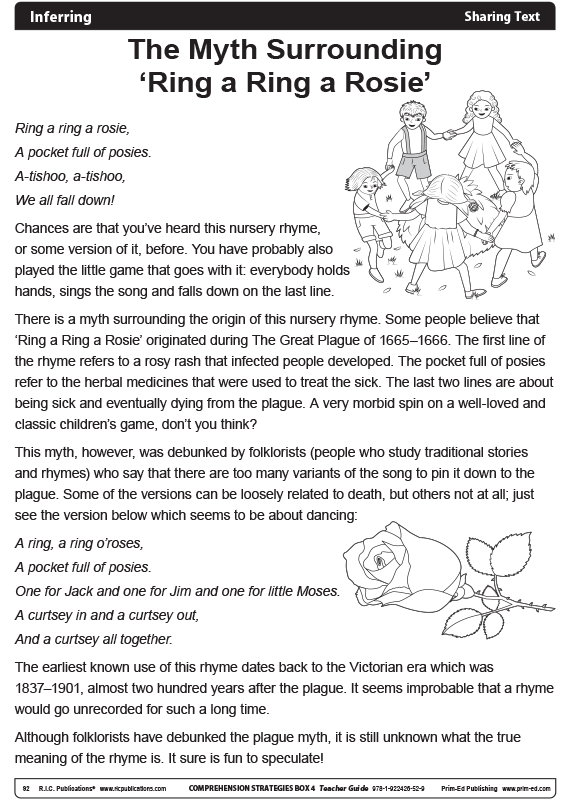
.png)
Sample pages from Teacher Guide 4 in The Comprehension Strategies Box series.
The children can then work on some of the activity cards, either individually, in pairs or in small groups. The teacher should select a particular level of card (1, 2 or 3), depending on the reading level of the child or group. A placement test is provided to help with this. There are two texts on each card, so children can practise the inferring strategy using more than one text. The children should use the corresponding resource sheets in the activity book which pose questions and activities that children will need to use inferring skills to answer.
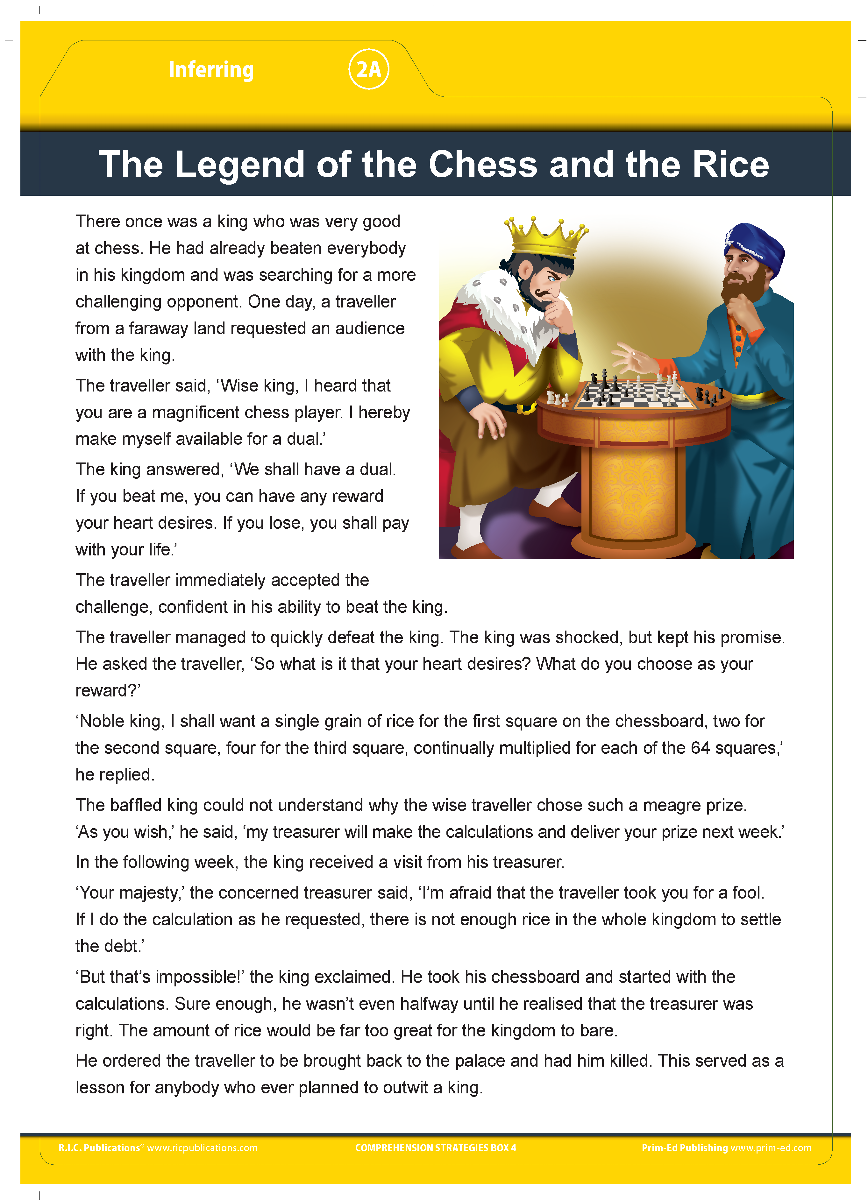
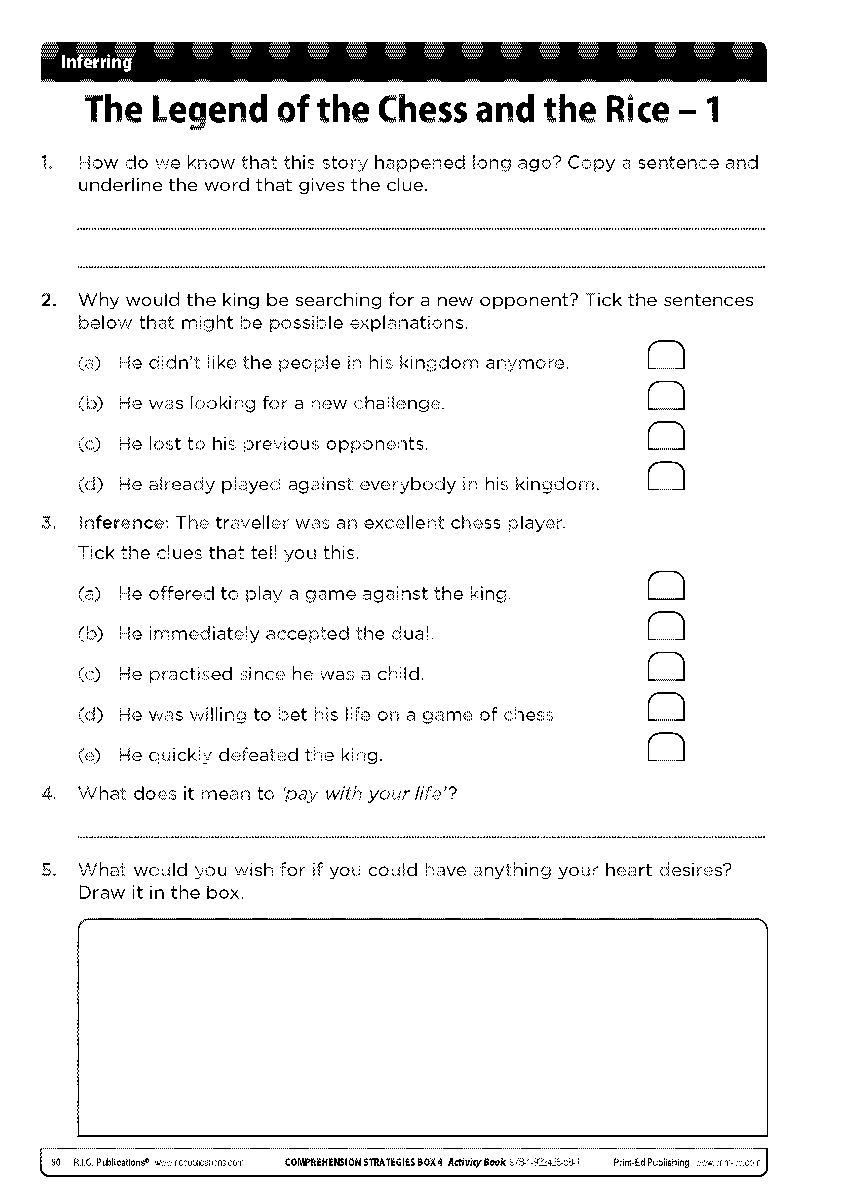
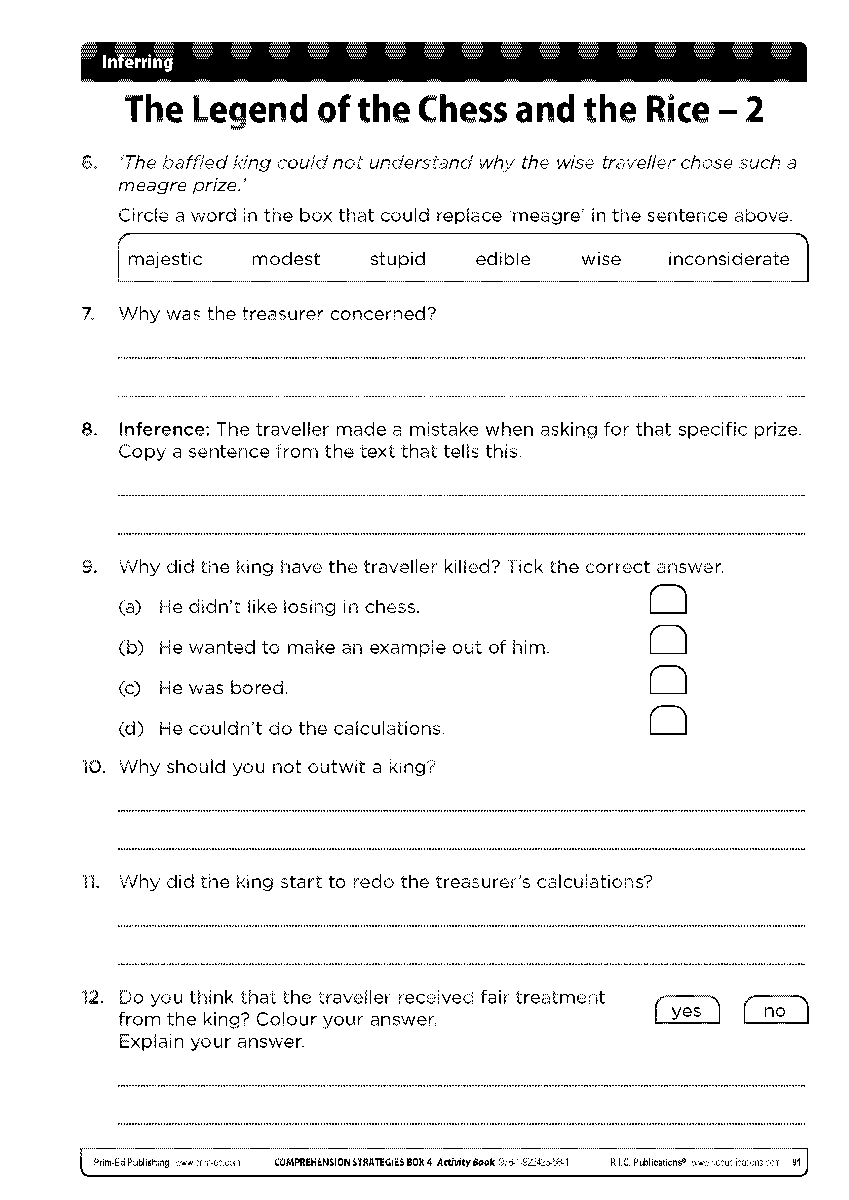
Card and sample pages from Activity Book in The Comprehension Strategies Box 4.
The teacher can use the assessment text in the teacher guide and the corresponding assessment questions to assess how well each child has understood and can use the inferring comprehension strategy.
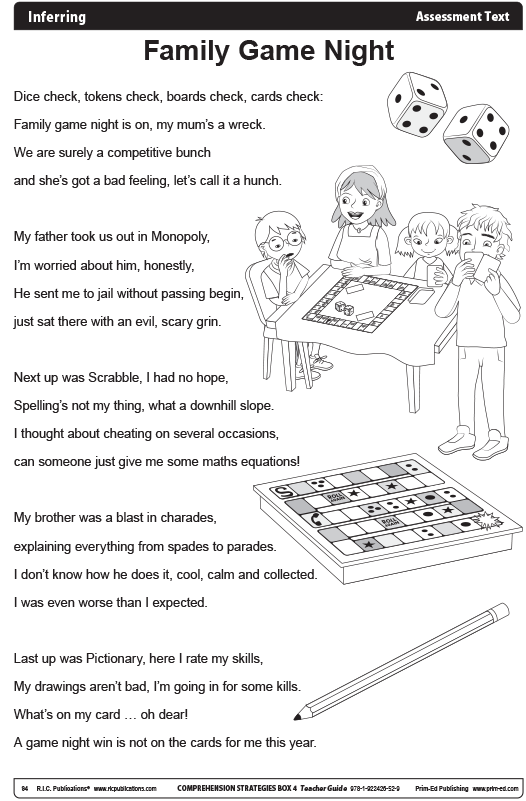
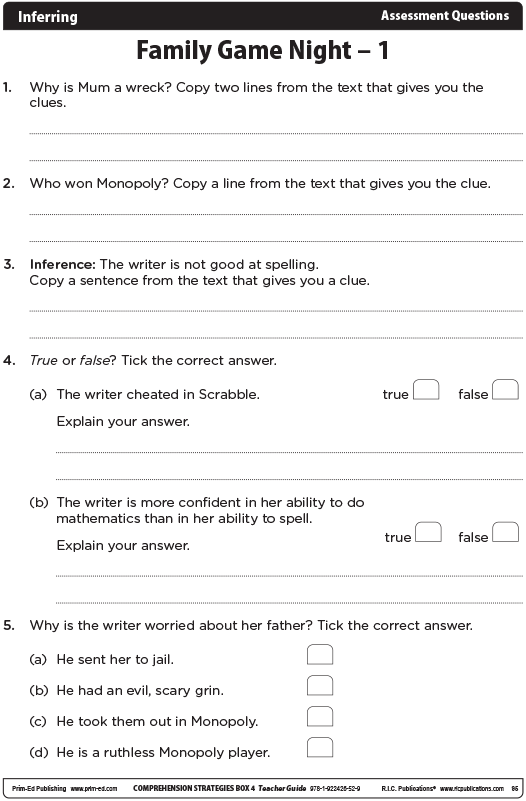
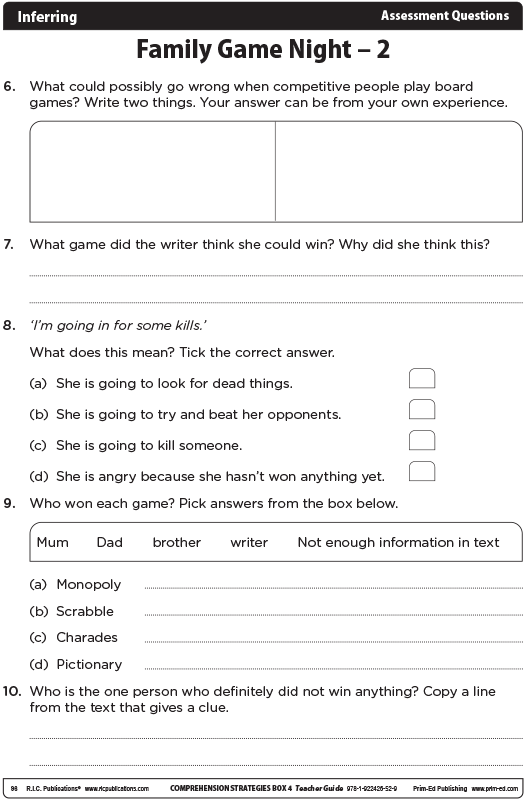
Sample pages from Teacher Guide 4 in The Comprehension Strategies Box series.
Other Resources to Teach the Inferring Strategy
Besides The Comprehension Strategies Box, Prim-Ed Publishing also publishes a seven-book copymaster series, titled Teaching Comprehension Strategies, which uses modelling, discussion and guided and independent practice to teach children the strategies they can use to develop different reading skills.
